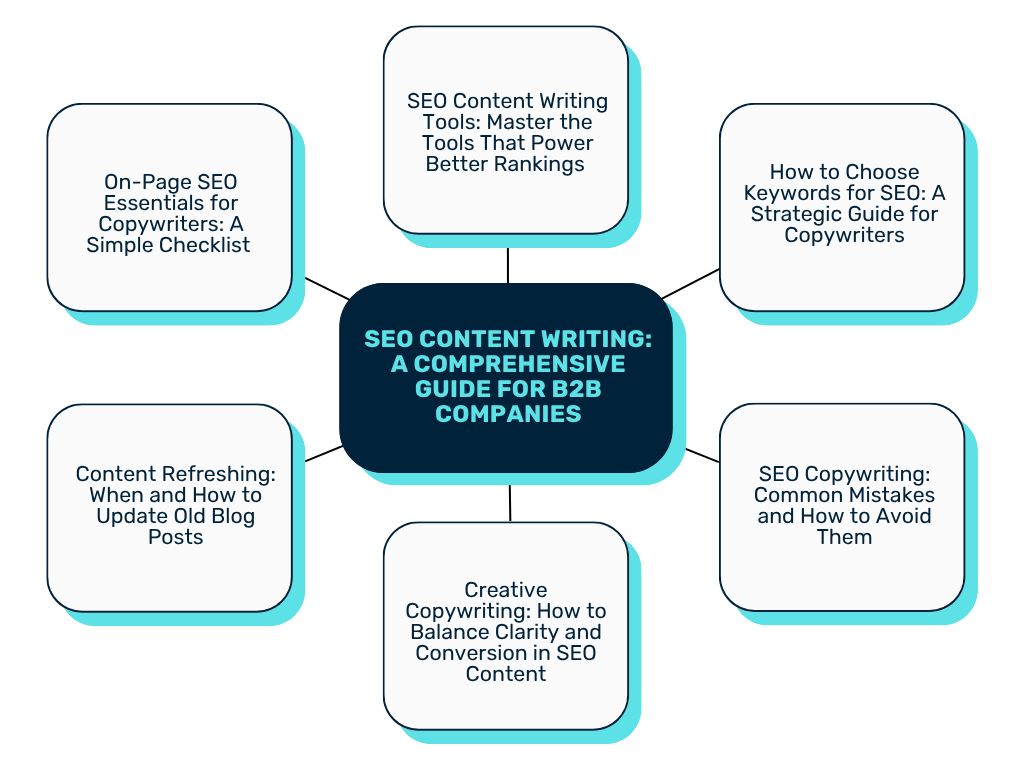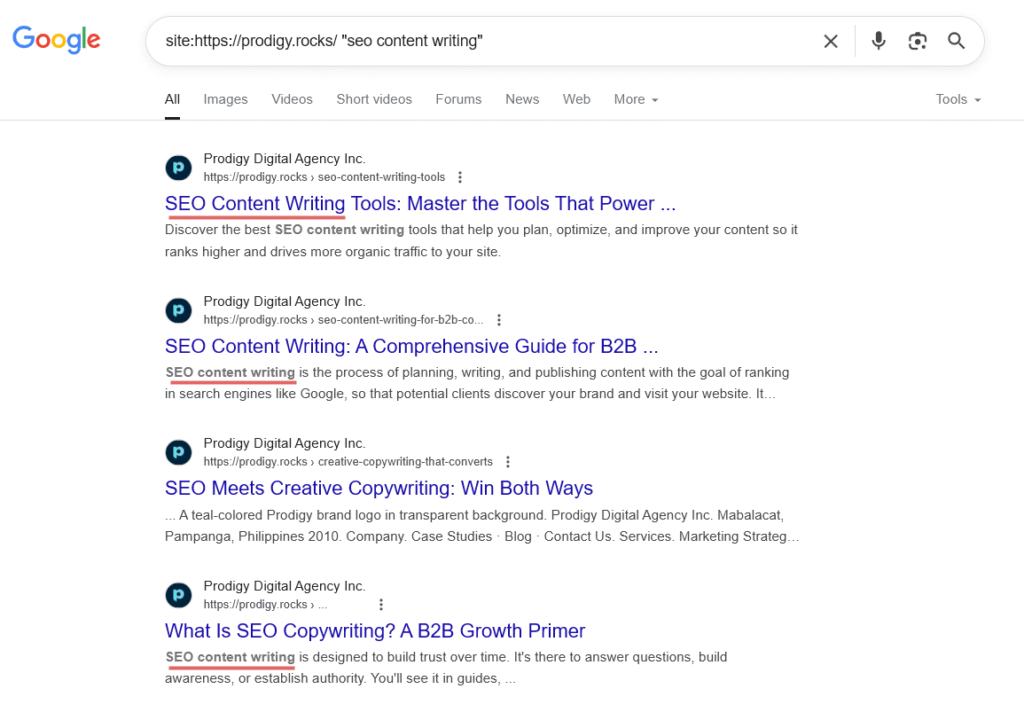
Google’s June 2025 core update just wrapped last July 17, 2025. And the official announcement is as familiar as ever:
“This is a regular update designed to better surface relevant, satisfying content for searchers from all types of sites.”
If you’ve been through a few of these updates before, you’ve probably noticed Google doesn’t say much. But between the lines, one message keeps repeating: relevance wins.
Not just content that matches a keyword, but content that genuinely covers a topic from multiple angles. Content that shows that you know what you’re talking about.
In other words: topical authority.
And one of the most effective ways to build that kind of authority in 2025?
Content clusters. They’re the structure that gives your content legs and helps you compete in a search landscape that’s more demanding (and more rewarding) than ever.
Key Takeaways
- Topical authority isn’t about keyword frequency—it’s about delivering structured, in-depth coverage that answers real questions from multiple angles.
- Content clusters turn scattered blog posts into a connected ecosystem, helping both Google and readers understand the depth of your expertise.
- You can build strong content clusters without starting from scratch by auditing, refreshing, and linking existing content with intent.
- Well-linked content clusters improve SEO and user experience simultaneously by guiding readers through a logical, helpful content journey.
- Content clusters give you a future-proof content strategy that can scale over time and adapt to rising quality standards with each Google update.
What Are Content Clusters
At their simplest, content clusters (or topic clusters) are a way of organizing your content around central topics.
You start with a pillar page: a big, in-depth piece that covers a broad topic from end to end. It’s your main resource—the thing you want to rank for the primary keyword.
Then, around that, you build supporting content. These go deeper into specific angles, subtopics, or questions people have about that central topic. They target more specific, long-tail keywords, but they all tie back to the big idea.
We’ve built clusters like this at Prodigy. One example: our pillar on SEO content writing acts as the hub, and around it, we’ve developed focused content on tools, keyword research, content refreshing, and more.

Each article speaks to a specific need. Each one links to the others. And together, they signal: we don’t just write about SEO; we know this space.
What Is Topical Authority?
Topical authority is a website’s demonstrated expertise on a specific subject. It is what sets generalists apart from go-to sources.
Google rewards sites with original and structured content that explores a topic from multiple valuable angles. So when your content consistently helps people learn more, do more, or decide faster, that builds trust—with both your audience and search engines.
And that’s exactly what content clusters are designed to support.
How Content Clusters Support Topical Authority
When people talk about topical authority in SEO, it’s easy to assume that simply publishing more blog posts will get you there.
But from Google’s algorithmic view, authority is how clearly your content reflects expertise across a subject. Content clusters help Google see that. They show your site isn’t just a list of posts, but a structured system of related ideas with depth and intent.
Here’s what’s happening behind the scenes:
- Google sees semantic relationships. A well-structured content cluster gives search engines the context they need. They can trace the connections between your pillar and cluster pages and start to understand the full scope of your coverage.
- Your site gains ‘topic relevance’. If someone searches a keyword that matches one of your cluster pages, and then another related query later, Google is more likely to return your content again because you’ve already proven your expertise.
- The signals compound. Each page strengthens the others. As your cluster pages build traction, they send authority back to your pillar. And as your pillar earns links and shares, it raises the profile of everything connected to it.
So yes, content clusters help you build the kind of site that deserves to rank—one that’s genuinely useful, comprehensive, and well-organized.
What Makes Content Clusters More Effective Than One-off Posts
Now let’s zoom in.
Content clusters aren’t just good for SEO. They’re also a smarter way to run your content engine.
If you’ve ever felt like your blog is a mix of solid posts that never quite add up to something bigger, content clusters are the structure you’re missing.
Here’s what they make possible:
1. Clearer content planning
Having clusters helps you zoom out. Instead of chasing blog ideas one at a time, you can map content based on what your audience needs to understand a topic fully. You’ll see what you’ve already covered, what’s missing, and how each new piece fits into the whole.
2. No more accidental overlaps
Without a structure, it’s easy to create posts that cover the same ground or compete for similar keywords. Clustered content solves this by assigning each piece a distinct focus so every article adds new value instead of repeating what’s already there.
3. Smarter linking and reuse
When you know how your content fits together, internal linking becomes strategic. You’re guiding readers from broad to specific or beginner to advanced, making it easier for them to keep learning (and for you to keep them engaged). That structure also makes it easier to repurpose content across formats without losing coherence.
4. Easier scaling over time
Content clusters give you a flexible framework to grow into. You can start with one pillar and a few supporting posts, then keep adding as your strategy evolves. It’s a setup that stays organized even as your content library expands.
5. Better collaboration across teams
A clear content structure makes it easier for writers, editors, SEO teams, and subject matter experts to work together. Everyone’s aligned on the goals of each piece—and how it connects to the bigger picture. That means fewer bottlenecks, cleaner briefs, and better output.
Let’s be real: most blogs underperform not because the writing is bad, but because the structure isn’t doing enough of the heavy lifting.
Clusters change that. They take everything you’ve already created and help it work together. It’s the difference between building a pile of content and building momentum.
How to Plan and Execute Your Content Clusters Without Starting Over
Most teams already have blog posts that could form a solid cluster. They just haven’t been connected yet. The key is taking what’s already there and giving it a strategy.
Here’s how to do that:
1. Audit your content for cluster-ready topics
Before writing anything new, take stock of what’s already on your site. You might have the makings of a strong cluster, but you just haven’t connected the dots yet.
Start by pulling up a list of the pages you’re already ranking for. SEO tools like Semrush make this easy: pop in your domain, and you’ll get a full view of the keywords you rank for and the pages attached to them.
If you don’t have access to these tools, you can try searching your site on Google. Type it like this: site:[yourdomain.com] + “keyword”

It’s a quick way to surface every post you’ve written that includes a specific keyword so you can see if you’ve already been circling the same subject from different angles.
Once you have a list, look for overlap. Are there multiple posts tackling the same broad theme from different angles?
Great—that’s your signal. You can either group them into a new cluster or combine them to form a strong pillar content.
Tip: If you haven’t published much yet, skip the audit. Just start with a strong pillar topic based on keyword research and build from there.
2. Outline your pillar and supporting topics
Once you’ve found a good pillar topic, it’s time to sketch out the structure around it.
Your pillar is the main guide (the big picture). The cluster content is where you zoom in. These are the specific how-tos, comparisons, tools, and questions people ask that relate to that broader theme.
And the easiest way to start? Create a simple database or tracker. You can do this in Notion, Google Sheets, or any other tool you use to stay organized. Create one row per topic, note the keyword you’re targeting, and group them under your chosen pillar.
This gives you a clear view of your coverage and helps avoid writing overlapping content later.
If you’re not sure what supporting topics to include, you can check out:
- People Also Ask on Google
- Tools like Answer the Public
- Community forums or Reddit threads in your niche
These show you what people are actually looking for, and each of those questions could be a cluster page.
3. Build your pillar page first
Take the overlapping posts you’ve grouped in Step 1 and shape them into a focused, comprehensive guide. The goal is to create an anchor for the entire cluster. Your pillar content must define the topic clearly and naturally lead into more detailed subtopics.
And here’s the thing: your supporting content doesn’t have to be live yet.
As you draft your pillar, highlight spots where a link will eventually go. Then, note it in your tracker so you don’t forget to come back and link it once that cluster post is ready.
This way, you’re building with the full structure in mind—even if not every piece is finished yet.
4. Refresh the supporting content you already have
As you outline your content cluster in Step 2, you’ll likely spot a few posts from your audit that already fit the supporting topics. Before creating anything new, focus on updating those first.
Your goal here is to tighten the focus, clean up the structure, and make sure each post clearly supports your cluster.
This might mean:
- Updating the intro to align with your pillar
- Linking back to the pillar early on
- Expanding thin sections with more helpful detail
- Renaming the post to reflect search intent better
Once those are updated, you can move on to writing new cluster content to fill any gaps. But starting with what you already have keeps the momentum going and gives your existing posts a second chance to pull their weight.
5. Link everything together (with purpose)
By now, you already know how cluster links should flow. But it’s not just about ticking off a structural checklist. The way you link content together plays a big role in how effective the whole cluster becomes.
So as you connect your pages:
- Make the anchor text clear and descriptive. Avoid vague phrases like “click here.” Instead, link phrases that match the keyword or idea of the destination page. This helps both readers and search engines understand what to expect.
- Use links to guide the journey. Think about where the reader might want to go next. Are they ready for a deeper dive? A practical example? A comparison post? Use links to nudge them naturally through your topic.
- Update links as you go. If you’re still drafting supporting pieces, leave notes in your content tracker and highlight the spots where links will go later. Once a post goes live, circle back and connect it.
These small decisions add up. When your content links together in a way that feels helpful, you create a smoother experience for your audience and stronger signals for search.
How to Measure the Impact of Your Content Clusters
You’ve built your cluster. It’s structured, strategic, and live.
Now comes the big question: is it working?
The results won’t always show up overnight, but if your cluster is doing its job, you’ll start seeing clear signals in your analytics and search performance. Here’s what to keep an eye on:
1. Rankings across the full cluster (not just the pillar)
It’s tempting to only track the performance of your main guide. But clusters work best when they lift everything together.
Check how your supporting pages are ranking for their target keywords. Even smaller posts should see gradual improvements as the whole cluster builds authority.
Tools like Semrush, Ahrefs, or Google Search Console make this easier. Watch for upward movement across multiple pages over a 3–6 month period and not just sudden spikes.
2. Organic traffic trends on cluster pages
A good sign that your cluster’s paying off? Supporting pages that used to get very little attention start pulling in traffic.
Log in to Google Analytics and track the individual performance of each page in your cluster. Look for growth in organic sessions, especially on posts you’ve recently refreshed or tightly linked together.
3. New keyword visibility (even the ones you didn’t target)
One of the clearest signs of growing topical authority is when Google starts ranking your pages for keywords you never explicitly tried to rank for.
Check your Search Console for new keyword impressions and clicks tied to your cluster. If you’re seeing broader visibility, it means Google is starting to view your site as a trusted voice on the topic.
4. Engagement signals that reflect a better user experience
Content clusters don’t just help search engines—they help real people navigate your content more easily.
So it makes sense to look at behavior metrics like:
- Longer average time on page
- Lower bounce rates
- Higher pages per session
These signals tell Google that visitors are finding what they need—and sticking around to explore more. That’s a great outcome both for rankings and for building trust.
5. Backlinks to your pillar (and maybe supporting content too)
Strong pillar pages often earn links over time. If your content is comprehensive and helpful, people will start referencing it naturally.
Use tools like Ahrefs, Majestic, or even Google Alerts to monitor new backlinks. See if any of your supporting pages are also starting to attract attention—another good sign your structure is working.
Don’t Wait for the Next Core Update to Get Strategic
Google’s June 2025 core update didn’t just reward “good content.” It raised the bar (again) for what quality and relevance really mean.
And chances are, the next update will raise it even higher. That’s why content clusters aren’t just a nice-to-have. They help you:
- They help you turn scattered blog posts into a system.
- They show Google and your audience that you’re not just dropping content into the void.
- You’re building something coherent, connected, and genuinely helpful.
So if your blog still looks like a pile of one-offs, take this as your cue. Build a content strategy that’ll hold up, no matter what the next update brings.
